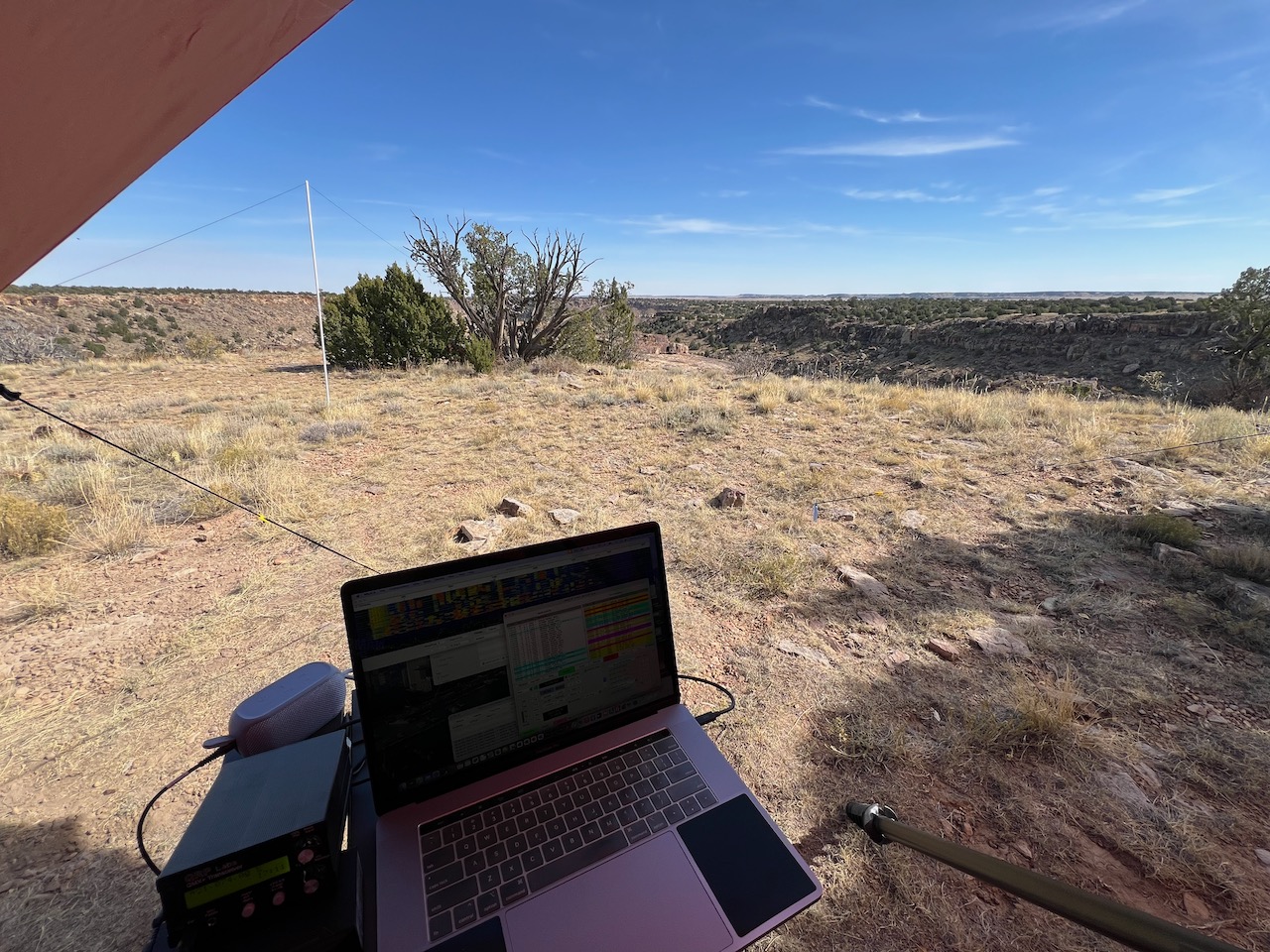Rejoining the ranks of amateur radio operators this year has been a whirlwind. It’s been exactly 12 weeks, as I write this, since I took my Technician exam test (on July 21) that, with previous license credit, was the first step in restoring my Amateur Extra class license. And since then, I’ve gotten back on VHF/UHF, put-up a workable stealth antenna at home for the HF bands, gotten a 100-watt transceiver from my dad, and built a low-power transceiver from a kit. Since re-entering the hobby, I’ve become keenly interested in Parks on the Air — POTA — and TL;DR: it’s been everything I’d hoped.
In fact, it feels like this entire journey has unfolded as well or better than I could have hoped, from doing my homework on gear and software and discovering it all went to plan, to the success in building the QRP Labs QMX+ transceiver kit that I alluded to above. Things just… clicked into place.
Multifaceted Appeal
POTA was something that snagged my attention from the very moment I’d heard about it. What could be better than setting-up shop in a park setting, firing-up a radio, and making some contacts in an outdoor space, enjoying the scenery or fresh air or change of pace or whatever else? And with my interest in film photography, I could use the opportunity to enjoy my cameras and shoot some film; in short, combine a few things I enjoy with a single activity. With that, a plan started to gel.
Colorado is fortunate to be home to a large number of state and national parks and other spaces, such as wildlife areas, that are included in POTA’s extensive database of eligible locations from which to operate. They range from parks in urban settings, such as Chatfield State Park and Cherry Creek State Park, both of which are in the Denver suburbs and a short drive from home, all the way to rather secluded locales such as the Apishapa State Wildlife Area, well east of Walsenburg, in southern Colorado. In fact, the Apishapa (pronounced uh-PISH-uh-paw) SWA had extra appeal, as when I’d started looking, I discovered it’d been activated for POTA just 13 times in POTA history. It was pretty remote, not exactly a short drive, and even once you get off the highway, it’s 20 miles of unpaved roads just to get to it.
Once I finally started poking around and looking at photos of the place, it sealed the deal: My first POTA activation would be there. Why make it easy on myself, right? (In point of fact, Apishapa ended-up being my second activation, but I’ll get to that in a moment.)
Assembling the Equipment
Initially, I was thinking I’d use the transceiver that I’d eventually be getting from my dad, an Icom IC-7000. The cost of the necessary LiFePO4 battery to power it in the field, however, gave me second thoughts. But after joining-up on Mastodon (the mastodon.radio instance, specifically) with a newly created ham profile, I heard about QRP Labs, and their excellent kits. After further digging, I’d soon settled on the idea of getting a QMX+ transceiver kit with the specific objective of using it for POTA. And, after reading posts from Jim, N4JAW about operating from his patio, I thought it would be fun to set-up a field-like station on my back deck and do a little hamming when the mood struck as well. Assuming I could do the build successfully, it’d be a lot easier to haul around for field operations than the Icom, not to mention needing a far less costly battery solution, so I made the decision and ordered it up.
Meanwhile, I ended-up making a snap decision to get an MJF-1984MP wire antenna for my field operations. I should arguably have not been so hasty, as I could have made a nearly identical antenna myself for less cash, but nevertheless, I ended-up with a suitable antenna for the primary HF bands (40m, 20m, 15m, 10m) that was affordable and would be easy to set-up and take-down in the field. (And with a tuner, I could use it on other bands as well.)
To make the antenna a little easier to deal with, I used a couple of pieces of small PVC pipe and a couple of lengths of electrical conduit as stiffeners to make a mast. I also cut some slots into the top end of the PVC for the wire to set into. Everything would be relatively easy to carry with me, and easy to both assemble and disassemble. The plan was coming together!
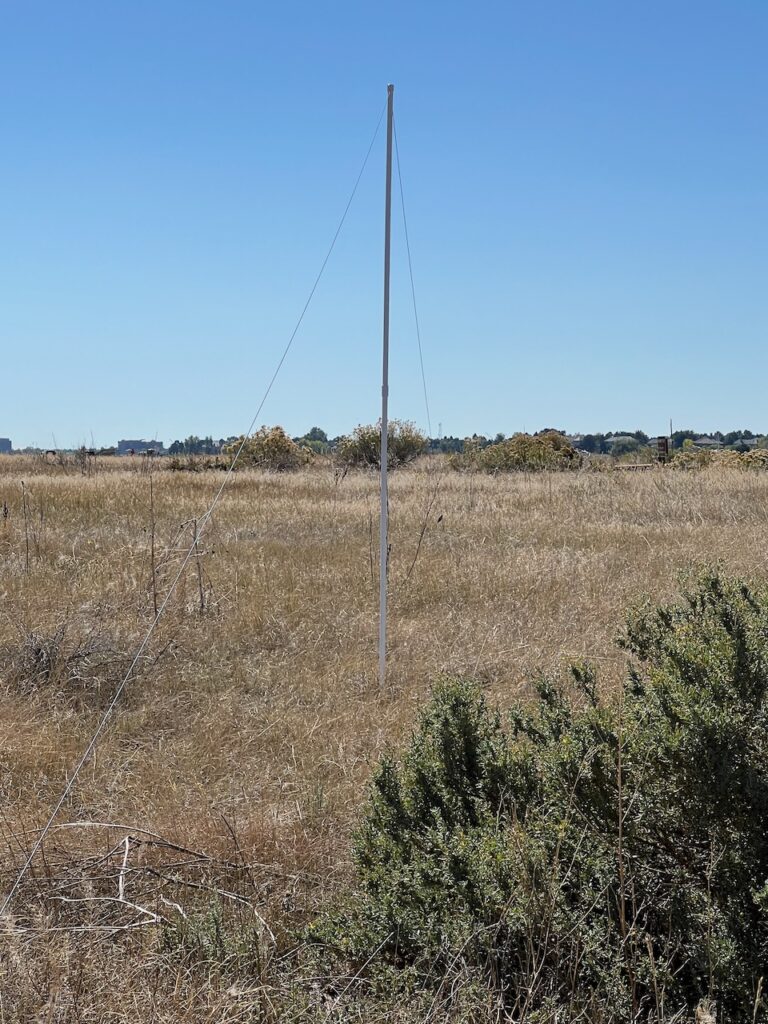
While I waited for the QMX+ kit to arrive from Turkey, I poked around and discovered some references to, and recommendations for, the Talentcell YB1208300-USB, a 99.9Wh DC lithium-ion battery pack. For less than US$50, it would be a good match for the QMX+ — and my decision to build the kit with the 9 volt power option. So, that was easy enough to secure from Amazon, along with the power cabling I’d need for the QMX+.
Once the kit arrived, I began to dig into its assembly. I have built electronics kits before, but my soldering skills are legendary — and not in a good way. So-called “cold” solder joints are a particular speciality of mine, based on past history, which is not ideal. And the fact I’d not wound a single inductor in my entire life made me intimidated by the need to wind lots of them on tiny little toroid cores to build the QMX+. But I decided I’d just take my time, read the directions carefully, and see what I could do. If I ended-up completely mucking it up, well, I’d given it my best.
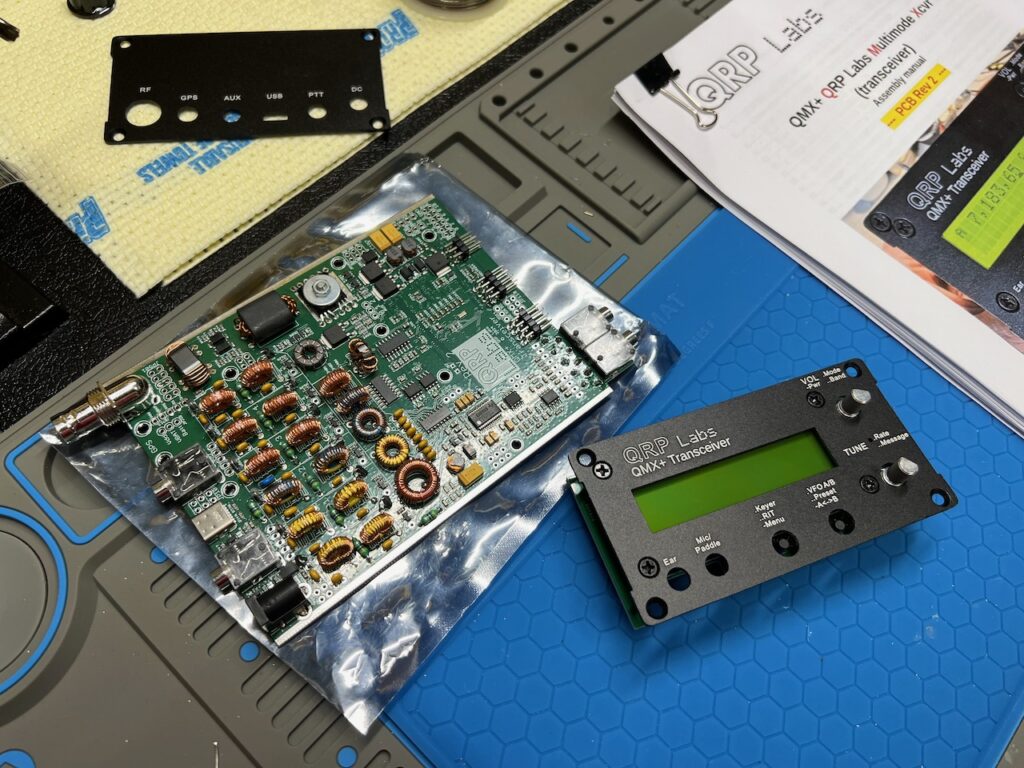
Once I completed the kit, it took me nearly two days to get the courage to try powering it up. In the end, I finally did. And much to my great surprise? It worked — seemingly perfectly.
My First POTA Activation
Despite my plans to activate at Apishapa SWA as my first POTA effort, I decided it would be wise to do a trial run a little closer to home. Since I had to drop by to the local Ham Radio Outlet store to get something, I figured I would bring everything along, and head to Cherry Creek State Park, POTA US-1213, and give things a test.
Setting-up in a parking area with nobody around, I put-up my MFJ wire antenna using the mast I’d fashioned, using tent stakes and lengths of tent rope to secure each end. With the radio, battery, and my MacBook placed in the back-end of my SUV, I fired everything up to do some FT8 operations, as per plan.
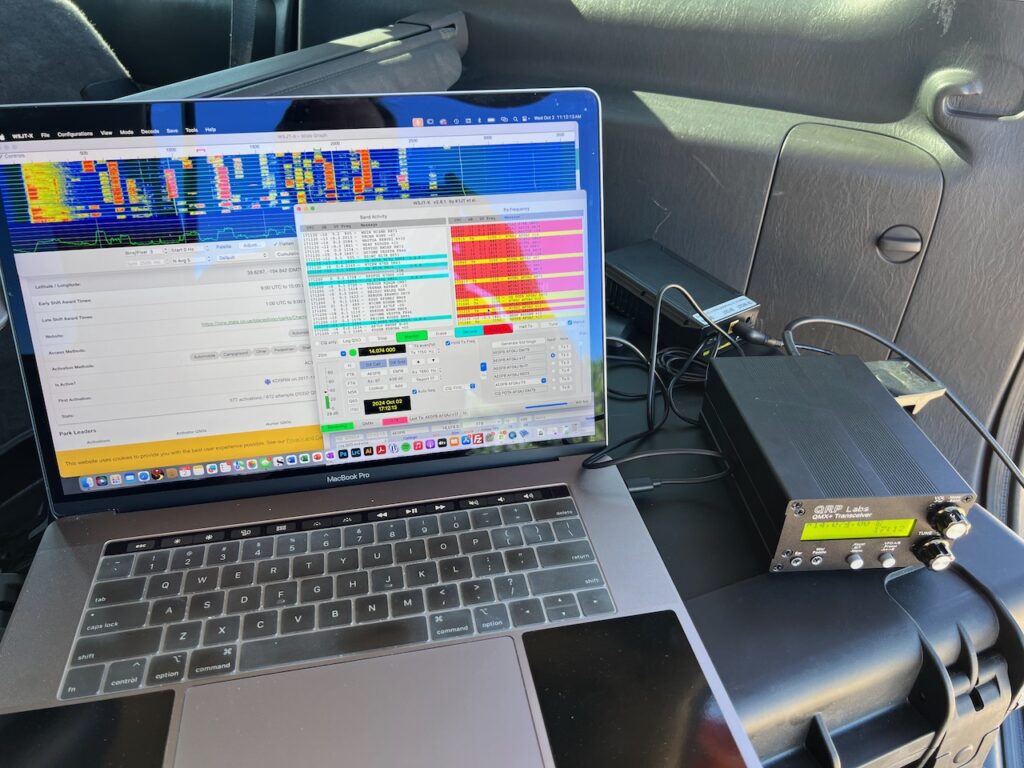
Everything worked really nicely, and I made 20 contacts in about an hour of effort, all on 20m. But my attempts to use 15m and 10m didn’t go so well. When I keyed-up to transmit, the radio simply stopped transmitting; CAT controls and audio seemed to fail. I wasn’t sure what was going on, but I didn’t feel like working on the problem in the moment, so merely stuck to 20m. But the issues would require some digging.
To make a long story short, testing at home on my normal antenna, from my ham shack, the QMX+ worked fine. But as soon as I set-up my wire antenna in the back yard and tried to operate from my deck, the same thing happened: transmit just stopped working. After lots of looking around online, and a fair amount of trial and error, the problem turned out to be nothing more than a crappy USB cable to connect the rig to my MacBook, and swapping it out with a decent quality cable (an OWC Thunderbolt 4 USB cable to be specific) solved the issue perfectly.
Finally: Apishapa
With the QMX+ working perfectly, it was time to plan-out a trip to Apishapa SWA for the POTA activation I’d been contemplating for weeks.
Getting to US-9607 is a bit of a journey. It’s about two hours from my home in the Denver area to get to Walsenburg, Colorado, and then another hour, the majority of it on dirty roads, to get to the SWA itself.
Using satellite imagery, and knowing nothing about the SWA, we’d chosen a spot near an area called Jones Canyon. What I didn’t realize is that navigating the road to the spot I’d chosen involved some actual 4×4 driving with my Ford Ranger. The truck is a new addition to the household, and while it’s equipped for 4×4 work (skid plates, etc.), it was only the second time I’d switched out of 2-wheel-drive mode. None of it was challenging terrain by any means; all it required was going slowly and carefully.
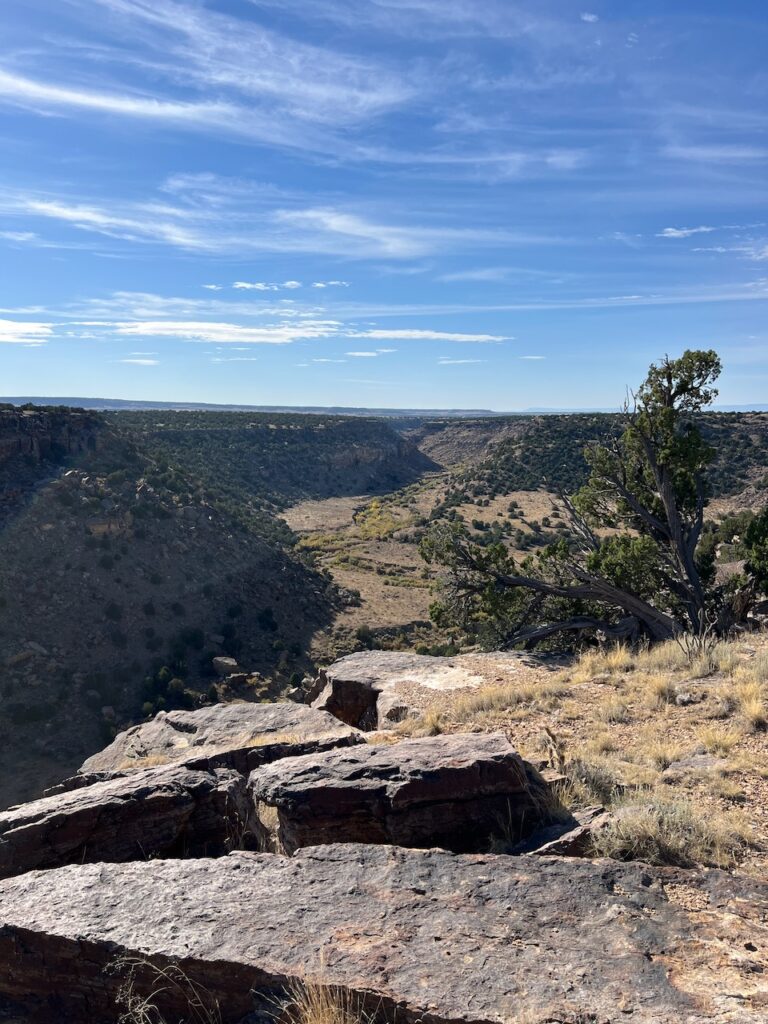
Once arrived, it was abundantly clear that we’d lucked-out on the choice. The canyon edge was just steps away, and the views were spectacular. The skies were clear, and the weather was nice. Time to set-up. That was a challenge given the very rocky surface, but I managed to get everything up and stable.
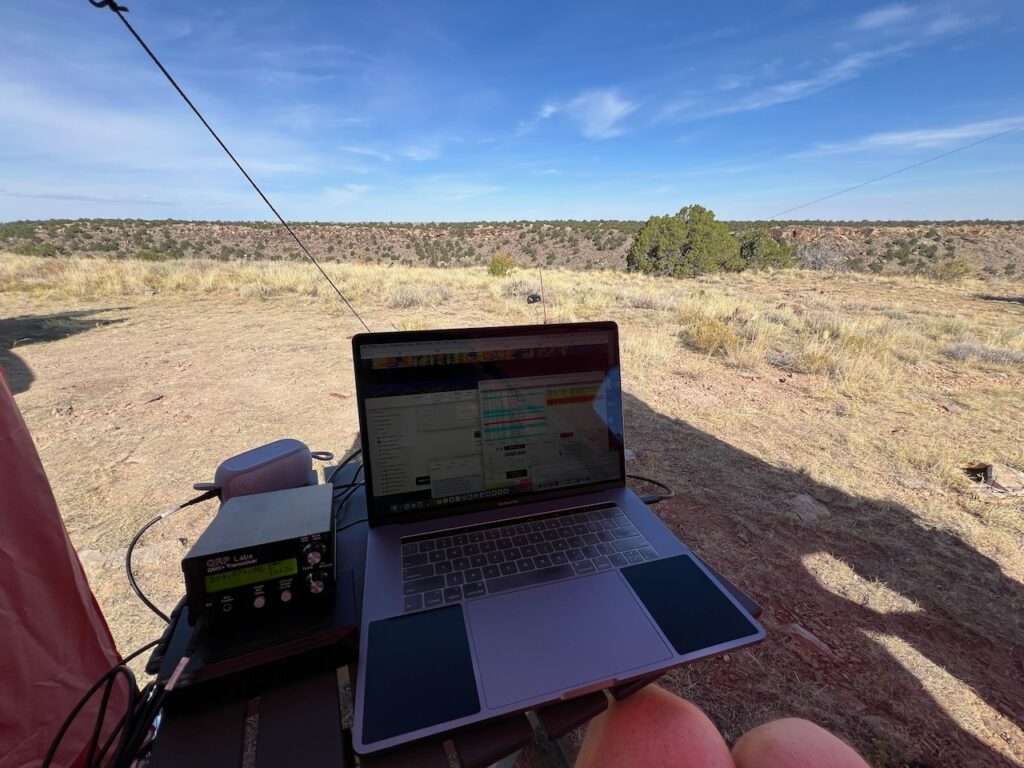
I’d come prepared to consider some CW work, but I stuck to FT8. I know that not all hams think very highly of the FT8 mode, but I find it to be a nice combination with POTA. FT8 lets you play radio, but doesn’t demand your full, undivided attention like CW, or even SSB. When you’re doing field work like POTA, and you’re in a beautiful setting like our spot in Apishapa, I don’t actually want to focus 100% of my attention on the radio. I’d like to enjoy the company of the person who tagged along. I’d like to look at the beauty around me. And — I’d like to use my film cameras to capture some of the experience. I will do some CW with POTA at some point, there’s no question about that. But I’m content with FT8 for an activation like Apishapa SWA.
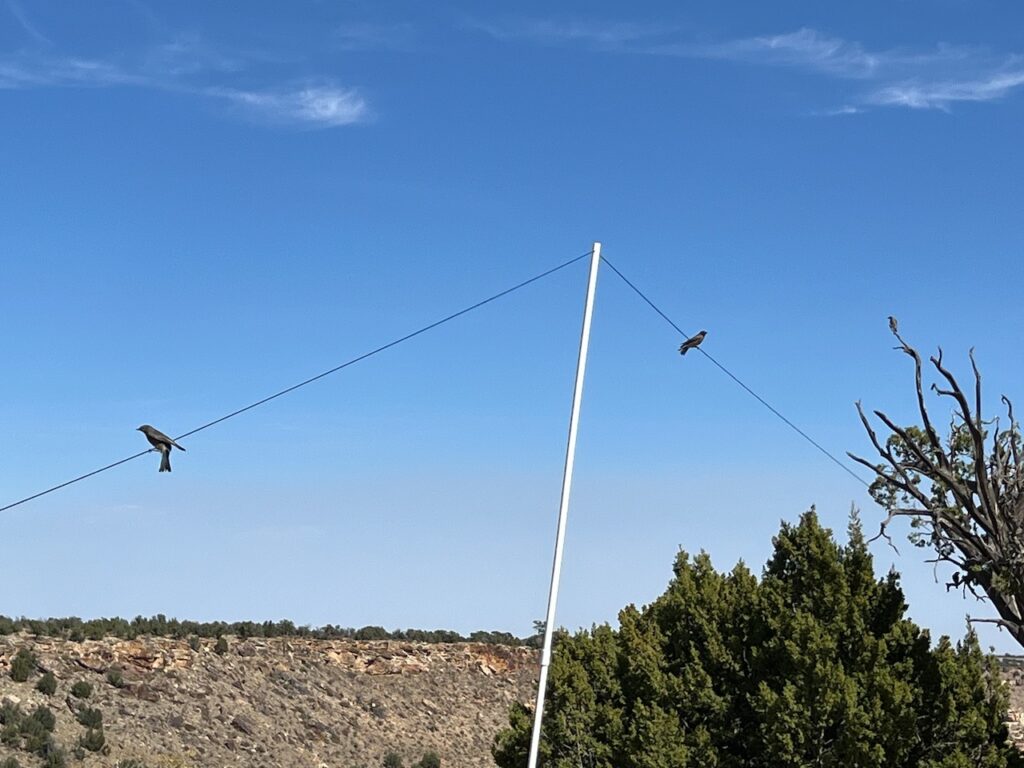
Over the course of a couple of hours, I scored about 50 contacts. All but one were domestic, but it was nice to kick things off with a contact in Germany. Not bad for a few watts of power into a very simple antenna.
Summing it Up
Without question, I get the appeal of POTA — and I’m hooked. When I’m at home, I make it a point to work someone when they’re calling CQ POTA, so I’ve been slowly racking-up hunter contacts. But the idea of getting out of the house… Of using a field setup… Of running QRP… Of doing a POTA activation… And of just having a good time? It validates my decision to go down this path, that’s for sure. As I said earlier, I like it when a plan comes together. But I like it even more when the plan turns-out to exceed my expectations in a major way.
Thankfully, Colorado is chock-full of places to activate POTA, and I’ve certainly not ruled-out hauling the essential pieces of kit with me to do some activations when on a road trip to other neighboring states.
We’ll see how it goes. But I think I’ve successfully found a particularly enjoyable corner of ham radio to pursue, and I look forward to more.

